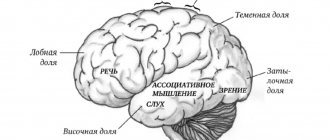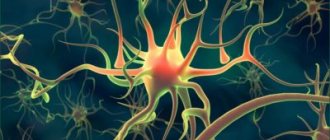What are sensations? To talk about sensations means to refer to the human body and all its nerve endings that help us get in touch with the world inside us and the world outside us.
Various types of sensations refer to the basic direct experiences caused by simple isolated stimuli. Sensation is also defined as the response of the sense organs to a stimulus. These are conscious captures of the properties of objects, things and phenomena.
Sensation is only the first stage of cognition, which through thought transforms data into ideas, concepts, laws, etc. And those, in turn, more deeply reflect the objective world and the accuracy of which is verified by practice. A sensation occurs when a stimulus impacts a receptor.
Although the concepts of sensation and perception are often used interchangeably, they differ in many details.
Sensation is the experience experienced by a stimulus in the form of a response to a sensory experiment, while perception is the interpretation of sensation that gives meaning and order.
Definition
Sensation is a spontaneous mental phenomenon that arises as a result of the direct influence of things of the objective world on the sense organs (analyzers) of animals and humans, an influence that is subjectively felt as the quality of the things themselves (red, cold, prickly, etc.). Sensation is secondary to material reality.
The term sensation has several meanings, for example it can refer to the impression that an object makes through the senses, that is, it becomes the immediate response of the sense organs when they receive a stimulus.
It also alludes to the surprise effect that people have when they are surprised by something or someone. Another definition refers to an intuition or feeling that an event or problem may occur to a person.
Sensation involves the optimal functioning of the senses and nervous system, and under normal conditions it results in what we can see, for example, red when it is red and green when it is green.
Sensitization
As mentioned above, there are ways to increase the sensitivity of organs as a result of the interaction of analyzers or exercise. This method is called sensitization. According to the type of sensitization A.R. Luria identifies two aspects of increased sensitivity:
- The first side depends on sustainable changes occurring in the body, and therefore is long-lasting and permanent. The age of the subject is associated with changes in sensitivity and reaches a maximum at 20-30 years, then gradually decreases;
- The second side is temporary and depends on physiological and psychological emergency effects on the subject’s condition.
Sensitization, adaptation, synesthesia refer to qualitative characteristics of sensations and are directly related to changes in sensitivity. Experienced tasters are examples of sensitization, conducting sensory analysis on subtle nuances, or musicians who distinguish by ear the relative duration of notes. On the contrary, industrial workers are characterized by desensitization, where high noise levels lead to deterioration of vision. When various types of sensations are suppressed or absent, compensatory sensitization occurs. This disadvantage is compensated for by increasing the sensitivity of other analyzers, for example, improving hearing in the dark.
Sensitization, as studies show, depends on factors:
- Age;
- Type of nervous system. People with a weak nervous system, people who do not have endurance and stability are predisposed to it;
- Endocrine balance of the body.
Characteristics and properties of sensations
- Characteristics:
- Sensation is an innate phenomenon . It has not been fully studied. You are born with the ability to receive sensations.
- The need for intensity or strength of sensation so that the stimulus is captured and its variations can be appreciated. The intensity of the sensation depends on the intensity of the stimulus. There is a difference in intensity that a stimulus requires in order for the subject to become aware of it. This is called a threshold.
- Duration: the time of constancy of sensation, that is, irritation of receptors. For example, auditory and visual sensations are short-lived, but painful sensations are long-lasting.
- The affective tone or state of mind of a subject, determined by the motives, expectations and experiences that he experiences and which influence both the predispositions and the ability to perceive, as well as the intensity of stimuli that must be captured and interpreted in the psychological field and they are individual.
- Sensational content: Content influences the perception of stimuli according to the relationships it has with motives, interests, expectations, and affective tone. We usually grasp with greater speed and intensity what interests us. And sometimes the same thing happens with what we think is going against us.
Properties of sensations:
Absolute and relative sensitivity threshold
Reflection - what is it in psychology, definition
For many sciences, quantitative indicators of the expression of impressions are important. By measuring them, the sensitivity of the individual and the threshold values of the action of the stimulus are determined.
Threshold is the value of the strength of the stimulus at which a person begins to feel it. Thresholds can be absolute or relative.
The lower absolute threshold is the ability of receptors to respond to weak stimulation. In order for a person to feel the signs of a stimulus, it must have a certain strength.
The upper absolute threshold is the maximum intensity of the stimulus that a person is able to perceive. This is the pain threshold. Examples include pain in the ears that occurs from a very loud sound, or a cutting pain in the eyes from a blinding light.
Upper threshold for light exposure
Relative threshold is the ability to notice a change in the strength of a stimulus.
Attention! Absolute thresholds determine the range of what is accessible to human perception in the surrounding reality.
Functions and role
“Our brains evolved not to react to the world around us, but to predict what will happen to us next.”
Lisa Feldman Barrett
Scientists and researchers in the field of psychology of the last century pay due attention to the role and functions of sensations, since through them we understand the world inside and around us:
- Detection: The detection element in each sense is known as a receptor, which is a cell or group of cells that are particularly sensitive to a particular type of energy or more than one form of energy.
- Conversion and transmission: Receptors convert or convert energy from one form to another. Sensory receptors convert incoming energy into electrochemical signals that the nervous system uses to communicate.
- Transmission: If this energy is strong enough, it triggers nerve impulses that convey encoded information about various characteristics of the stimulus. Impulses travel along specific nerve fibers to specific areas of the brain.
- Stimulating and regulating information processing: Both the brain and receptors process sensory information: in organisms of relative simplicity, such as frogs, receptors do most of the work. In more complex animals, such as humans, the brain has a much greater workload.
Classification of sensations
Types of sensations are divided into 3 main types:
But at different times, different scientists proposed their own classifications of sensations.
Wundt classification
Sherrington classification
Sherrington, based on the localization (location) of receptors, identified three main classes of sensations:
Head classification
G. Head believed that the correct division of sensations should occur according to their origin:
Classification by contact with irritant
Based on contact with the stimulus, sensations are divided into two types:
These sensations are intermodal and, therefore, can be considered multisensory.
Interoceptive sensations
Interoceptive sensations are stimuli emanating from internal organs.
It is the brain's representation of the body's own sensations, it is the sensory consequence of this activity, and it is fundamental to everything from thoughts, emotions, acceptance
decisions and our sense of self, to ensuring regulation of basic needs.
Simply put, interoceptive sensations (interoception) are the internal sensations of the body. We have receptors in organs, muscles and on the skin that provide us with various types of information that our brain then must integrate in order to have adequate performance (for example, while playing, getting dressed, at school, etc.).
Interoception allows us to sense our internal organs and gives us information about the internal state of our body, that is, informs us about pain, body temperature, itching, sexual arousal, hunger, thirst, heart rate, breathing rate, feeling drowsy or the desire to go to the bathroom . But in addition, interoception is the basis for identifying different emotional states, in a way that allows us to know whether we are calm or nervous, if we are ashamed, sad, afraid, etc.
Exteroceptive sensations
Exteroceptive sensations inform us about the external environment. These are the so-called superficial sensations. Receptors are located on the skin and mucous membranes. These are all kinds of sensations associated not only with touch, vision, smell, taste and hearing, but also with movement. Exteroceptive sensations are caused by external stimuli. External stimuli can act through direct contact or at a distance.
Visual sensations
We are talking about the sensations that arise when the subject observes something or someone. These sensations usually vary in their purity and brightness. Among them, there are colors that become more vibrant than others.
Visual sensations also include:
Olfactory sensations:
Smell - The olfactory sensations are produced by volatile particles produced by the bodies from which they are released. There is a close connection between the sense of smell and taste. The nose is the organ of smell. Sometimes we don't perceive the taste of food well because of a cold.
Auditory sensations
These are sensations created by sound, so they are divided into sounds and noises. These sensations usually vary depending on height and tone. They also change depending on the timbre.
Tactile sensations
These sensations are created directly through the skin of a person, who can feel any element or object that touches him. Through the skin, one can feel when an object is rough, smooth, rough, regardless of whether it has thermal characteristics, i.e. hot, cold, warm, etc.
These sensations can also be caused by an internal process.
The sensations perceived by touch are of three types and are transmitted to the brain in different ways:
- Protopathic sensations. The most primitive and little differentiated, they react to the most powerful and extensive factors, such as pain, extreme cold or heat. They are the first to appear after nerve injuries.
- Epicritic sensations. The most subtle, localized and precisely allow us to recognize low intensity stimuli, allowing us to recognize shapes and sizes.
- Thermoalgesic sensations. Those associated with fever and pain.
Taste sensations
Through the sense of taste, we perceive the different aromas of things. They report the taste and chemical value of the material (sweet, sour, bitter). Their organ is located in the oral cavity, and their receptors are the taste buds of the tongue.
The stimuli for these sensations are substances in the liquid state. The function of saliva is to dissolve solids so that taste can be tested. For this reason, taste is considered a chemical sense, since it requires a liquid solution to stimulate it. Solids do not produce a sense of taste until they dissolve in liquids in the mouth.
Your psychologist. The work of a psychologist at school.
What are sensations?Sensations are the initial source of all our knowledge about the world. With the help of sensations, we cognize the size, shape, color, density, temperature, smell, taste of objects and phenomena around us, catch various sounds, comprehend movement and space, etc. It is sensations that provide material for complex mental processes - perception, thinking, imagination .
If a person were deprived of all sensations, he would not be able to cognize the world around him in any way and understand what is happening around him. Thus, people who are blind from birth are not able to imagine what red, green or any other color is; people who are deaf from birth are not able to imagine what the sound of a human voice, birdsong, musical melodies, the sounds of passing cars and flying airplanes, etc. are.
A prerequisite for the occurrence of sensation is the direct impact of an object or phenomenon on our senses. Objects and phenomena of reality that affect the senses are called stimuli. The process of their influence on the sense organs is called irritation.
Already the ancient Greeks distinguished five senses and their corresponding sensations: visual, auditory, tactile, olfactory and gustatory. Modern science has significantly expanded our understanding of the types of human sensations.
A sense organ is an anatomical and physiological apparatus located on the periphery of the body or in the internal organs; specialized to receive exposure to certain stimuli from the external and internal environment. Each such device connects the brain with the outside world and ensures that various information enters the brain. I.P. Pavlov suggested calling them analyzers.
Any analyzer consists of three sections: a sensory organ - a receptor (from the Latin word “receptor” - receiving), which perceives the stimulus acting on it; the conductive part and the nerve centers of the cerebral cortex, where the processing of nerve impulses occurs. All sections of the analyzer work as a single whole. The sensation will not occur if any part of the analyzer is damaged. Thus, visual sensations cease when the eyes are damaged, when the optic nerves are damaged, and when the corresponding areas of the cerebral cortex are destroyed.
The surrounding reality, influencing our sense organs (eye, ear, endings of sensory nerves in the skin, etc.), causes sensations. Sensations appear when excitation in a sensory organ caused by some stimulus spreads along centripetal paths to the corresponding areas of the cerebral cortex and is subjected to the finest analysis there.
The brain receives information both from the outside world and from the body itself. Therefore, analyzers are external and internal. External analyzers have receptors located on the surface of the body - the eye, ear, etc. Internal analyzers have receptors located in internal organs and tissues. The motor analyzer occupies a peculiar position.
The analyzer is a complex nervous mechanism that performs a subtle analysis of the surrounding world, that is, it identifies its individual elements and properties. Each analyzer is adapted to highlight certain properties of objects and phenomena: the eye reacts to light stimuli, the ear to auditory stimuli, etc.
The main part of each sense organ is the receptors, the endings of the sensory nerve. These are sensory organs that respond to certain stimuli: the eye, ear, tongue, nose, skin, and special receptor nerve endings embedded in the muscles, tissues and internal organs of the body. Sense organs such as the eye and ear combine tens of thousands of receptor endings. The impact of a stimulus on the receptor leads to the generation of a nerve impulse, which is transmitted along the sensory nerve to certain areas of the cerebral cortex.
Sensation is a reflection of the individual properties of objects and phenomena during their direct impact on the senses.
Currently, there are about two dozen different analyzer systems that reflect the effects of the external and internal environment on the body. Different types of sensations arise as a result of the influence of different stimuli on different analyzers. We receive sensations using the senses. Each of them gives us its own special sensations - visual, auditory, olfactory, gustatory, etc.
Types of sensations.
All sensations can be divided into two groups: 1) Sensations that reflect the properties of things or phenomena located outside of us. The organs of these sensations are located on the surface of the body or close to it. 2) Sensations that reflect the movements of individual parts of our body and the state of our internal organs. The organs of these sensations are located deep in the tissues (for example, muscles) or on the surface of internal organs (for example, in the walls of the stomach, respiratory tract).
The first group includes visual, auditory, olfactory, gustatory and skin sensations.
1. Visual sensations are sensations of light and color. Everything we see has some color. Only a completely transparent object that we cannot see can be colorless. Colors are achromatic (white and black and shades of gray in between) and chromatic (various shades of red, yellow, green, blue).
Visual sensations arise as a result of the influence of light rays (electromagnetic waves) on the sensitive part of our eye. The light-sensitive organ of the eye is the retina, which contains two types of cells - rods and cones, so named for their external shape. There are a lot of such cells in the retina - about 130 rods and 7 million cones.
In daylight, only cones are active (such light is too bright for rods). As a result, we see colors, i.e. there is a feeling of chromatic colors - all the colors of the spectrum. In low light (at dusk), the cones stop working (there is not enough light for them), and vision is carried out only by the rod apparatus - a person sees mainly gray colors (all transitions from white to black, i.e. achromatic colors).
There is a disease in which the functioning of the rods is disrupted and a person sees very poorly or sees nothing at dusk and at night, but during the day his vision remains relatively normal. This disease is called “night blindness”, since chickens and pigeons do not have rods and see almost nothing at dusk. Owls and bats, on the contrary, have only rods in their retinas - during the day these animals are almost blind.
Color has different effects on a person’s well-being and performance, and on the success of educational activities. Psychologists note that the most acceptable color for painting the walls of classrooms is orange-yellow, which creates a cheerful, upbeat mood, and green, which creates an even, calm mood. Red color excites, dark blue depresses, and both tire the eyes. In some cases, people experience disturbances in normal color perception. The reasons for this may be heredity, diseases and eye injury. The most common is red-green blindness, called color blindness (named after the English scientist D. Dalton, who first described this phenomenon). Colorblind people do not distinguish between red and green, and do not understand why people denote color in two words. Such a feature of vision as color blindness should be taken into account when choosing a profession. Colorblind people cannot be drivers, pilots, painters, fashion designers, etc. A complete lack of sensitivity to chromatic colors is very rare.
The less light, the worse a person sees. Therefore, you should not read in poor lighting, at twilight, so as not to cause unnecessary strain on the eyes, which can be harmful to vision and contribute to the development of myopia, especially in children and schoolchildren.
Auditory sensations arise through the organ of hearing. There are three types of auditory sensations: speech, music and noise. In these types of sensations, the sound analyzer identifies four qualities: sound strength (loud-weak), height (high-low), timbre (the originality of the voice or musical instrument), sound duration (playing time), as well as tempo-rhythmic features of sequentially perceived sounds. .
2. Auditory sensations. They arise with the help of the organ of hearing. There are three types of auditory sensations: speech, music and noise. In these types of sensations, the sound analyzer identifies four qualities: sound strength (loud-weak), height (high-low), timbre (the originality of the voice or musical instrument), sound duration (playing time), as well as tempo-rhythmic features of sequentially perceived sounds. .
Hearing for speech sounds is called phonemic hearing. It is formed depending on the speech environment in which the child is raised. Mastering a foreign language involves the development of a new system of phonemic hearing. A child’s developed phonemic hearing significantly influences the accuracy of written speech, especially in elementary school. A child’s musical ear is nurtured and formed, just like speech hearing. Here, the early introduction of the child to the musical culture of mankind is of great importance.
Noises can evoke a certain emotional mood in a person (the sound of rain, the rustling of leaves, the howling of the wind), sometimes they serve as a signal of approaching danger (the hiss of a snake, the menacing barking of a dog, the roar of a moving train) or joy (the patter of a child’s feet, the steps of an approaching loved one, the thunder of fireworks ). In school practice, one often encounters the negative influence of noise: it tires the human nervous system. Vibration sensations reflect vibrations of the elastic medium. A person gets such sensations, for example, when he touches the lid of a sounding piano with his hand. Vibration sensations usually do not play an important role for humans and are very poorly developed. However, they reach a very high level of development in many deaf people, for whom they partially replace missing hearing.
3. Olfactory sensations. The ability to smell is called the sense of smell. The olfactory organs are special sensitive cells that are located deep in the nasal cavity. Individual particles of various substances enter the nose along with the air that we inhale. This is how we get olfactory sensations. In modern man, the olfactory sensations play a relatively minor role. But blind-deaf people use their sense of smell, just as sighted people use their vision and hearing: they identify familiar places by smell, recognize familiar people, receive signals of danger, etc.
A person’s olfactory sensitivity is closely related to taste and helps to recognize the quality of food. Olfactory sensations warn a person about a dangerous air environment for the body (smell of gas, burning). The incense of objects has a great influence on a person’s emotional state. The existence of the perfume industry is entirely due to the aesthetic need of people for pleasant smells.
Olfactory sensations are very significant for a person in cases where they are associated with knowledge. Only by knowing the characteristics of the odors of certain substances can a person navigate them.
4. Taste sensations. They arise with the help of the taste organs - taste buds located on the surface of the tongue, pharynx and palate. There are four types of basic taste sensations: sweet, bitter, sour, salty. The variety of taste depends on the nature of the combinations of these sensations: bitter-salty, sweet-sour, etc. A small number of qualities of taste sensations does not mean, however, that taste sensations are limited. Within the limits of salty, sour, sweet, bitter, a whole series of shades arise, each of which gives the taste sensations a new uniqueness.
A person’s sense of taste is highly dependent on the feeling of hunger; tasteless food seems tastier in a state of hunger. The sense of taste is very dependent on the sense of smell. With a severe runny nose, any dish, even your favorite, seems tasteless.
The tip of the tongue tastes sweets best. The edges of the tongue are sensitive to sour, and its base is sensitive to bitter.
5. Skin sensations - tactile (sensations of touch) and temperature (sensations of heat or cold). There are different types of nerve endings on the surface of the skin, each of which gives the sensation of touch, movement, or warmth. The sensitivity of different areas of the skin to each type of irritation is different. The touch is most felt on the tip of the tongue and on the tips of the fingers; the back is less sensitive to touch. The skin of those parts of the body that are usually covered by clothing, the lower back, abdomen, and chest, is most sensitive to the effects of heat and cold. Temperature sensations have a very pronounced emotional tone. Thus, average temperatures are accompanied by a positive feeling, the nature of the emotional coloring for warmth and cold is different: cold is experienced as an invigorating feeling, warmth - as a relaxing one. High temperatures, both in the cold and warm directions, cause negative emotional experiences.
The second group includes motor sensations, sensations of balance and organic sensations.
1. Motor sensations. Their receptors are located in muscles, tendons and on articular surfaces. Motor sensations provide signals about the degree of muscle contraction and the position of our limbs, for example, how much the arm is bent at the shoulder, elbow or wrist joint. The combination of skin and motor sensations obtained by feeling objects, that is, by touching them with a moving hand, is called touch. The organ of touch is the hand with all its skin, muscle and joint receptors. The hand as an organ of touch first appears in monkeys, but reaches full development only in humans, becoming a tool for him. Skin sensations themselves signal only the fact of an object touching the body and the location of this touch. When a fly lands on our forehead, we easily notice it, but we can just as easily be misled and mistake the touch of a straw, brush, blade of grass or piece of paper for a fly. To more accurately determine the properties of an object touching the skin, its hardness, softness, roughness, smoothness, shape, outline, etc., you need to feel it. For example, the sensations of hardness and softness depend mainly on how much resistance the body provides when pressure is applied to it; therefore, it is impossible to determine the degree of hardness or softness of objects without the participation of motor sensations.
2. Feelings of balance. They reflect the position occupied by our body in space. When we first get on a two-wheeled bicycle, skate, roller skate, or water ski, the most difficult thing is to maintain balance and not fall. The sense of balance is given to us by an organ located in the inner ear. It looks like a snail shell and is called a labyrinth.
When the position of the body changes, a special fluid (lymph) vibrates in the labyrinth of the inner ear, called the vestibular apparatus. The balance organs are closely connected with other internal organs. When the balance organs are strongly overexcited, nausea and vomiting are observed (the so-called seasickness or air sickness). With regular training, the stability of the balance organs increases significantly.
The vestibular system gives signals about the movement and position of the head. If the labyrinth is damaged, a person can neither stand, nor sit, nor walk; he will fall all the time.
3. Organic feel. Their receptors are located in the walls of most internal organs: the esophagus, stomach, intestines, blood vessels, lungs, etc. Organic include the sensations that we have during hunger, thirst, satiety, nausea, internal pain, etc. So far we are completely healthy, well-fed, in general, when the internal organs work normally, we do not notice almost any organic sensations; they mainly give signals about disturbances in the functioning of internal organs. Impulses directed to the cortex from the internal organs, without being clearly conscious, underlie the general “well-being” of a person. Internal analyzers monitor, check the chemical composition and blood pressure, the condition of organs and their functioning; at the same time, they can enter into temporary communication with analyzers that bring information about external objects.
Properties of sensations.
The main properties of sensations include: quality, intensity, duration, spatial localization, threshold of sensations.
Quality is a property that characterizes the basic information displayed by a given sensation, distinguishes it from other types of sensations and varies within a given type of sensation. For example, taste sensations provide information about certain chemical characteristics of an object: sweet or sour, bitter or salty. The sense of smell also provides us with information about the chemical characteristics of an object, but of a different kind: flower smell, almond smell, hydrogen sulfide smell, etc.
It should be borne in mind that very often, when they talk about the quality of sensations, they mean the modality of sensations, since it is the modality that reflects the main quality of the corresponding sensation. The intensity of the sensation is its quantitative characteristic and depends on the strength of the current stimulus and the functional state of the receptor, which determines the degree of readiness of the receptor to perform its functions. For example, if you have a runny nose, the intensity of perceived odors may be distorted.
The duration of a sensation is a temporary characteristic of the sensation that has arisen. It is also determined by the functional state of the sensory organ, but mainly by the time of action of the stimulus and its intensity. It should be noted that sensations have a so-called patent (hidden) period. When a stimulus acts on a sense organ, the sensation does not occur immediately, but after some time. The latent period of different types of sensations is not the same. For example, for tactile sensations it is 130 ms, for pain – 370 ms, and for taste – only 50 ms.
Spatial localization of the stimulus - spatial analysis is carried out by distant receptors, it gives us information about the localization of the stimulus in space.
Threshold of sensations. The minimum value of the stimulus that causes barely noticeable sensations is the lower threshold. The maximum value of the stimulus that still causes sensations is the upper threshold. (For hearing, the min threshold is the ticking of a clock from a distance of 6 meters. For touch, the feeling of the movement of a fly’s wing when falling from a height of 1 cm).
Development of sensations.
Sensitivity, i.e. The ability to have sensations, in its elementary manifestations, is innate and is certainly a reflex. A child who has just been born already reacts to visual, sound and some other stimuli. Human hearing is formed under the influence of music and sound speech. All the wealth of human sensations is the result of development and education.
Often insufficient attention is paid to the development of sensations, especially in comparison with more complex cognitive processes - memory, thinking, imagination. But it is precisely sensations that underlie all cognitive abilities and constitute the powerful development potential of a child, which most often is not fully realized.
The structure of our senses allows us to sense much more than what we actually sense. It’s as if a complex device is not working at full capacity. Is it possible to somehow change or enhance our sensations? Of course you can.
The development of sensations occurs in connection with practical, primarily work, activity of a person and depends on the demands that life and work place on the work of the senses. A high degree of perfection is achieved, for example, by the olfactory and gustatory sensations of tasters who determine the quality of tea, wine, perfume, etc.
Painting places special demands on the sense of proportions and color shades when depicting objects. This feeling is more developed among artists than among people who do not paint. The same goes for musicians. The accuracy of determining sounds in pitch is influenced, for example, by the instrument a person plays. Playing music on the violin places special demands on the violinist's hearing. Therefore, violinists’ pitch discrimination is usually more developed than, for example, pianists’ (Kaufman’s data).
It is known that some people distinguish melodies well and repeat them easily, while others think that all melodies have the same motive. There is an opinion that an ear for music is given to a person by nature and if someone does not have it, then they will never have it. This idea is wrong. During music lessons, any person develops an ear for music. Blind people have especially acute hearing. They recognize people well not only by their voice, but also by the sound of their steps. Some blind people can distinguish trees by the noise of leaves, for example, distinguish a birch from a maple. And if they saw, then they would not have much need to pay attention to such small differences in sounds.
Methods for measuring sensations.
Methods for measuring sensations: 1) direct 2) indirect
In psychology of the late 19th – early 20th centuries. There is an idea that sense organs (receptors) passively respond to influencing stimuli and, accordingly, sensations, from this point of view, are a passive process.
The reflex theory believes that sensation is an active process - the main position of this theory is as follows - every sensation includes movement. Complex sensations are not possible without active movement; an example of a complex sensation would be feeling an object with your eyes closed.
List of used literature.
1.B. M. Teplov. “Psychology” Uchpedgiz, Moscow, 1953
2. “Psychology” by Dubrovin I.
3. Atkinson R. L., Agkinson R. S., Smith E. E. et al. “Introduction to Psychology: A Textbook for Universities” / Transl. from English under. ed. V. P. Zinchenko. - Moscow: Trivola, 1999.
4. Dmitrieva “General psychology.” (Lecture notes)
Test work by Galiullina E.A.
Mental map - sensations
Patterns
The properties and patterns of sensations emphasize the dependence and importance of analyzing systems in their work under the influence of stimuli.
Sensations arise only when the receptors change under the influence of movements in the surrounding world or the sense organs themselves.
Several patterns of sensations can be identified:
- Sensitivity thresholds
- Device
- Interaction.
- Sensitization.
- Contrast
- Synesthesia
Thresholds
Although the sensory stimuli may be the same, each person will perceive different things. On the other hand, sensitivity is determined by sensation thresholds, that is, by the intensity of stimuli with which we begin to perceive something. In this sense, three thresholds can be distinguished:
- Minimum threshold . This is the minimum or maximum level from which a person can experience a sensation. This is the barrier that separates stimuli that are detected from those that are not.
- Maximum threshold. When the sensation that a person experiences is so strong that it is not fully perceived.
- Differential threshold. This threshold represents the minimum difference that can be detected between two stimuli.
Adaptation
Adaptation is the adjustment of sensory abilities after prolonged exposure to stimuli. Environmental stimuli cause the sensitivity of sensory receptors to change depending on the type of environmental stimulus, thereby stimulating a specific receptor. Adaptation occurs when a person gets used to a stimulus and changes the coordinate system. Consequently, he does not react to the stimulus as well as before.
Interaction
Our sensations interact with each other. From the very beginning of perception, they are responsible for enhancing, empowering other senses, even competing with each other and causing surprising changes to each other. The sensory properties of the body are constantly changing. Therefore, a change in the sensitivity of some receptors under the influence of others is called the interaction of sensations. This combination of sensory information is necessary for the brain to build a picture of the outside world.
Contrast
Sensory contrast is the perception of an increased or increased difference between two stimuli or sensations (due to changes in the quality and intensity of sensations that occur under the influence of a preliminary or accompanying stimulus) when they are juxtaposed or when one immediately follows the other. An example is the effect that occurs when a trombone follows a violin or when the colors bright yellow and red are perceived simultaneously.
Or, if a sleeping person is pricked with a needle easily enough, he will not wake up. He will reflexively pull his leg away from the needle because his sensations are still retained, and his spinal reflexes will kick in, even though he does not perceive the sensation.
The thing is that instant cancellation of the action of the stimulating factor does not cause the same instant cancellation of stimulation processes in the receptors. This is a gradual process and not only does it take some time, but also several phases of excitation and inhibition of excited neurons must occur. Only then will the original sensitivity threshold be restored.
Synesthesia
People with synesthesia have a particularly curious cross-talk of senses and sensations, in which the activation of one sense spontaneously triggers the other. They may see colors when they hear noise, associate certain identities with days of the week, or hear sounds when they see moving dots.
This only proves to us the interconnection of all analytical systems of the human body.
Synesthesia is thought to be genetic, and recent research even suggests it may confer an evolutionary advantage.
Most synesthetes do not notice anything strange in the way they perceive their environment until it is brought to their attention.
The response to certain sensations sometimes depends not only on whether we feel, for example, an orange very sour or rich and sweet, which may be physical characteristics of the stimulus, but in other cases we may experience certain sensations from previous experience.
That is why through sensations we can accurately feel the world around us in all its splendor and in all its aspects.
Natalia Shakhova
§ 14. Change in sensitivity under the influence of the demands of life and activity
We have seen how great the sensitivity of the human senses can be. However, in reality, for most people, the development of sensations lags far behind the capabilities provided by the structure of the sense organs.
What does the development of sensations depend on? - Mainly from what demands life makes on sensations and, first of all, the activity in which a person is engaged.
1) Hearing sensitivity
The most important function of hearing for all people is speech perception. Deafness is difficult mainly because it makes it impossible to hear speech. It is not surprising that in all of us, auditory sensations develop primarily in relation to the sounds of speech, and, moreover, not to any sounds of speech, but specifically to the sounds of our native language. Distinguishing these sounds, starting from early childhood, is the most important necessity for us. Therefore, it seems incomprehensible to us how it is possible not to distinguish between them. However, in fact, the difference between many speech sounds is extremely small and requires very fine auditory sensitivity. Anyone who wants to properly master the correct pronunciation in any foreign language has to be convinced of this.
In the Russian language, for example, to understand the meaning of words it is necessary to distinguish hard consonants from soft ones. Words such as “chalk” and “chalk” or “mol” and “mol” have completely different meanings, but in terms of hearing they differ from each other only in that in one case the last consonant is hard, and in the other it is soft. Neither in French, nor in English, nor in German is there such a distinction between hard and soft consonants. In these languages, the meaning of a word can never change from replacing a hard consonant with a soft one. These languages do not require a person to distinguish between hard and soft consonants. As a result, it is very difficult for a French, German or English person to hear the difference between a hard and a soft consonant; it seems to them extremely subtle, almost elusive. And while learning the Russian language, they constantly make mistakes, pronouncing a soft consonant instead of a hard one, or vice versa.
Russian also encounters similar difficulties, but in relation to other sounds, when learning any of the foreign languages. In French, for example, the meaning of a word can depend on whether the e is pronounced closed or open (for example, nez - nose and net - clean). For a Frenchman, the difference between these sounds seems enormous, while a Russian needs a lot of time and effort to learn to “hear” this difference. In German and English, the difference between long and short vowels has the same meaning, which does not exist in Russian.
Thus, from childhood, every person must develop a special ear for the sounds of his native language, which involves a very fine differentiation of sounds that are close to each other. Good mastery of a foreign language requires that a similar ear for the sounds of this language be developed, and this can only be achieved in the process of using this language.
In another direction, auditory sensations develop when practicing music, which requires, first of all, a very subtle discrimination of the relationships between sounds in height. In the process of playing music, an ear for music is developed.
Some professions develop a very subtle sensitivity to various kinds of special sounds. So, for example, an experienced pilot hears the subtlest nuances in the sound of the engine, by which he judges its operation, while to an outsider it seems that the engine always makes the same noise.
Remarkable fineness of hearing is often observed in the blind. Many of them can determine the size of a room by how the sounds of footsteps or voices are heard in it; by the same sounds they judge whether the room is furnished or empty, whether there are carpets on the walls or not. Blind people recognize people well not only by their voice, but sometimes by the sound of their steps. There have been cases where blind people distinguished types of trees (poplar, acacia, olive tree) by the noise of the leaves.
Of course, the natural properties of the hearing aid in the blind are the same as in the sighted, but life requires them to better differentiate auditory stimuli. By hearing they judge what sighted people can see much more easily with their eyes, and therefore they learn to distinguish some of the subtlest shades of sounds.
2) Visual and tactile sensitivity
In most types of human activity, vision plays a particularly important role, and therefore it is visual sensations that are the most highly developed in most people. It is not for nothing that humans are sometimes called “visual animals.” But even in the field of vision, our sensations, as a rule, are very little developed in comparison with the capabilities we have. It is known, for example, that some workers in the textile industry who specialized in the production of black fabrics can distinguish up to forty shades of black where most people see only two or three shades.
In some activities, no less subtle tactile sensitivity is developed. Experienced millers can use touch to accurately determine the quality of flour and even find out in what area the wheat from which the flour is made grew.
3) Olfactory sensitivity
For the vast majority of people, olfactory sensations play a minor role in life. Therefore, they remain underdeveloped. However, the possibilities for developing olfactory sensations in humans are very high. This is revealed whenever human activity begins to require that he be guided by olfactory sensations.
The olfactory sensations acquire extreme importance in the deaf-blind, that is, in people who lost both sight and hearing in early childhood. The sense of smell is their main means of recognizing people and objects at a distance. By the smell they recognize the person who entered the room, they determine whether the person they are interested in was in the room some time ago: walking along a familiar street, they judge by the smell which house they are now passing by.
4) Vibration sensitivity in deaf and blind-deaf people
Vibration sensations are the sensations that we receive from the entire surface of our body from air vibrations produced by moving bodies. These sensations play almost no role in our lives, since we perceive air vibrations much more subtly with the help of hearing. Therefore, under normal conditions we do not even notice these sensations. But if a person loses his hearing, vibration sensations become of great importance for him. There are cases where completely deaf people discover a great love for music, although they cannot hear a single sound. Some of them prefer to play the piano and, in order to perceive the music, place their hand on the lid of the instrument. Others are more willing to “listen” to the orchestra and, when attending concerts, sit with their backs to the stage, since with their backs they best perceive air vibrations. Such people can have a good understanding of music, unmistakably recognizing works that are well known to them.
Vibration sensations become even more important in the deaf-blind, especially in those who are deprived of their sense of smell. Deaf-blind people, with the help of vibration sensations, perceive a knock on the door, recognize when someone enters their room, and can even recognize familiar people by their gait; on the street, with the help of vibration sensations, they notice the approach of a car from afar. Some of the deaf-blind people manage to talk from across the room using Morse code by tapping their feet on the floor; they feel the vibrations and understand everything that is conveyed to them.
We all have the same possibilities for developing vibrational sensations, but they usually remain unused, since in similar cases we use other, more advanced senses.
5) Development of sensations
So, with a healthy state of the senses, it is possible to achieve extreme subtlety of sensations. To do this, you need to set yourself tasks that necessarily require high sensitivity in some type of sensation. By practicing such activities, we can achieve significant results in a relatively short time.
From this point of view, the pursuit of art is especially important. Painting, drawing, performing all kinds of artistic work are the most powerful means for the comprehensive development of vision functions. Sculptural works develop, along with visual and tactile sensations. Music classes lead to the subtle development of musical ear, and classes in fiction, poetry, and theatrical art raise “speech hearing” to greater heights. A person with a high culture in the field of art usually also has well-developed sensations.











